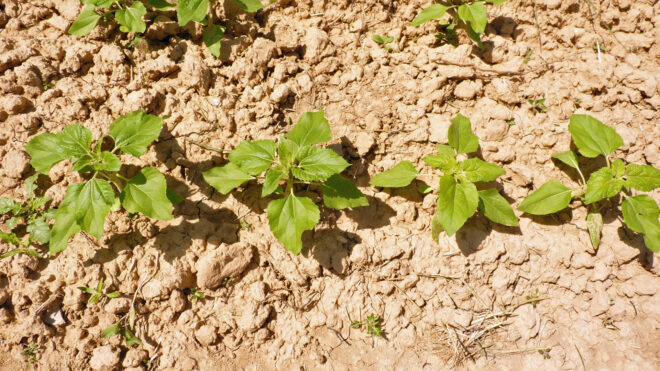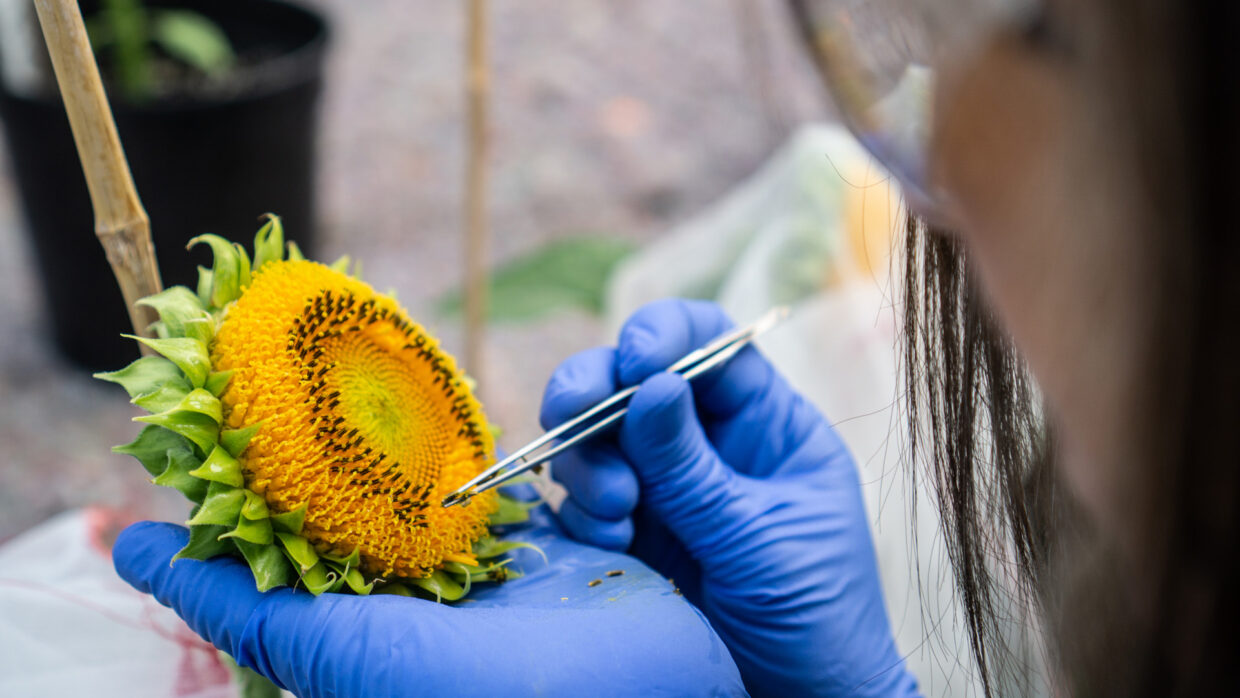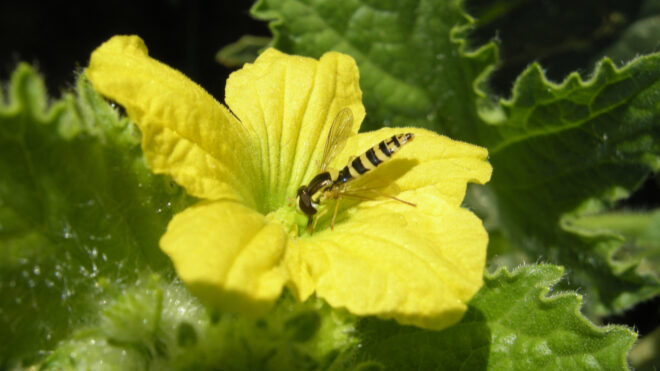Sunflowers are resilient to the harsh summer heat of inland Spain. They have played an important part in crop diversification for farmers and act as an alternative in crop rotation in water scarce areas. However, the low prices that producers are paid have led to a decrease in the planted area. “Although this year has been good for yields, overall production is similar to the previous year since the acreage has reduced slightly,” asserts Pedro Gallardo, president of the Oilseeds Working Group at COPA-COGECA.
The chance to substitute palm oil for sunflower oil could boost the growth of this crop and the farming economy.
Pedro Gallardo
The Spanish sunflower harvest is usually around 700,000t per year. “The problem is competing with other European countries. We harvest on average a little more than 1t/ha, whereas our competitors get around two.” Mr Gallardo is above all a sunflower farmer who comes up with strategies so that he can make profits in the seed market. He has successfully planted earlier in southern Spain in order to sell his produce before anyone else and achieve better prices. In general, the average price ranges between €320/t (£291) and €330/t (£300) for linoleic sunflowers and more than €460/t (£418) for high oleic varieties.

Pedro Gallardo has promoted early sunflower planting in the south of Spain.
Preference for high oleic content
Carlos Cifuentes is a distinguished farmer in the Spanish ‘seed’ region. He has planted 60ha of sunflowers this season, covering 28% of his farm area. This acreage has reduced significantly when compared to previous years, in favour of rapeseed.
“The sunflower extraction industry prefers imported seeds which are cheaper, yet less homogenous in quality, to national ones,” states Mr Cifuentes, also vice president of the Young Farmers Association of Cuenca (ASAJA). The fall in production at national level means the sunflower seed milling industry in Spain is far from self-sufficient. The nation needs 1.1-1.3m tonnes of seed for an extraction industry which buys between 33 and 40% of national sunflower seeds. “Many of us are choosing to grow high oleic sunflowers which sell at higher prices to produce better quality oils,” says Mr Cifuentes. The yields are greater than in previous years; the goal is to reach 2t/ha and to achieve this, there are both scientific and technological solutions.

The crop can serve as a natural firewall in its advanced growth stage.
Research close to farmers
Despite the American origins of sunflowers, farming of them is predominantly European, with Russia and Ukraine at the forefront of global production. Some 80% of the 20m ha of cultivated sunflowers in the world are located on the European continent. “Due to its strategic location, Spain is home to the most important technological research centre dedicated to sunflowers, located in La Rinconada (Seville), with 10,000m2 of greenhouses as well as almost 1,500m2 of laboratories,” says Alfredo Mateos, head of research and operations at Corteva AgriScience.
“In line with the demands we have listened to from farmers, new hybrid strains are being developed at accelerated rates (four generations per year), by embryo rescue. We want to combine high productivity potential with a wide adaptability which is often achieved through genetic resilience to pests and diseases like broomrape and mildew,” states Mr Mateos.

The technological centre in La Rinconada, where genetics are developed at an accelerated rate to obtain new varieties.
High seed yields
European legal restraints have gradually limited the use of farming tools, as demanded by the Alliance for Agricultural Sustainability, of which Pedro Gallardo is president. The ban on neonicotinoids in sunflowers makes them more vulnerable to insect attacks when the seedlings begin to sprout.
Using seeds with high yield potential and defensive characteristics increases their value, thus offering the industry high oleic varieties that produce higher quality oils. “The oils produced contain fatty acids similar to those in olive oil, with high oleic acid content,” says Mr Mateos. “These oils have the advantage of being more suitable for industrial processes, such as frying, and are healthier for consumption.”
With the aid of digital agriculture, producers can better predict harvest time and make early decisions to increase crop yields. “Our increasingly frequent and clear satellite images allow us to analyse the growth of the sunflower from the moment it is planted, with the focus on its leaf mass index,” explains Mr Mateos. This means solutions to pests or water stress can be devised in advance.
Margins for biodiversity

Alfredo Mateos supervises research on this complex strategy.
European policies will support biodiversity strategies, such as flower margins that surround monoculture sunflower fields. This is what the irrigated fields in León look like. “Farmers and scientific bodies are actively working with us to plant them,” says Germán Canomanuel, Syngenta’s corporate relations manager in Spain, involved in the Pollinator Operation, with CSIC, ETSIAAB in Madrid and IMIDA. “The benefits include a significant increase in the population of insects like bees and other pollinators.”.
More than 500 species have been identified in the project’s margins. Hymenoptera (bees, wasps, ants) have increased by 170%, lepidoptera (butterflies) by 96%, coleoptera (beetles) by 115% and diptera (flies) by 252%, according to a monitoring study in 10 agricultural plots in Spain and Portugal, carried out by the company.
Flower margins are sown with herbaceous plants adapted to each climatic area and are multifunctional. In addition to attracting a wide variety of pollinators and insects, they protect against erosion and runoff into watercourses. “The margins must occupy 3-5% of the plot perimeter, with a width of 4-6m. Where the crop ends the margin starts,” says Mr Canomanuel, who recommends planting in autumn and weeding in summer with two harvests every five years.
OILSEEDS IN EUROPE
During 2019/20 season sunflower farming has increased by 3.2% compared to the previous year. During the same time period oilseed farming in general has decreased by 8% to 10.8m ha. Oilseed production has fallen by 10.9% to 29.5m tonnes, most of the decline is in rapeseed, which is partly compensated for by the rise in sunflower and soya.

A REAL ALTERNATIVE TO PALM OIL
Spain is the second biggest importer of palm oil in Europe, 1.8m tonnes behind the Netherlands which imports almost 2m tonnes. In 2000 it imported only 77,000t. Sunflowers could be the alternative: They are sustainable, and their high oleic properties are appealing. In France only 170,000t of palm oil are imported.


